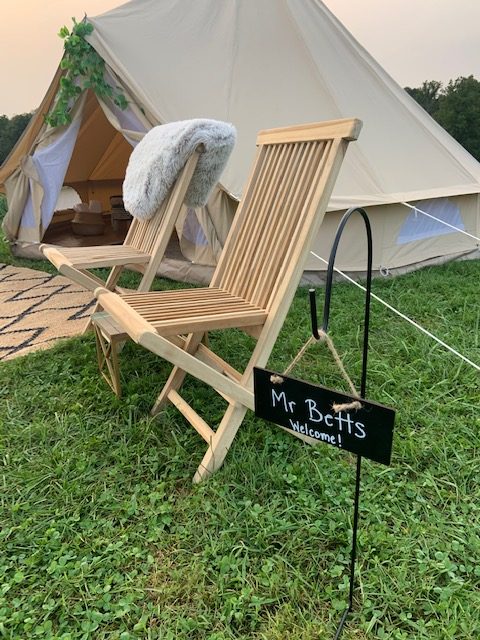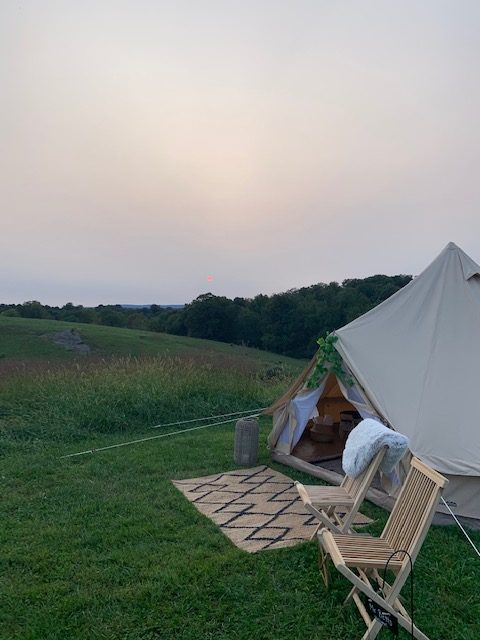As companies slowly transition into their new realities—whether that’s working entirely remote or back in the office full time or some combination of both—many employers are looking to safely gather the troops again for a company offsite or a multi-day corporate retreat. But, after more than a year apart, many are wondering how to successfully host this type of event, knowing that attendees may be feeling uneasy or hesitant.
“As more people are becoming vaccinated and companies begin planning for Q4, there has been an upswing in corporate retreat requests again,” says Alex Glasscock, C.E.O. and founder of The Ranch Malibu, which is known for its fitness and wellness program. “People are longing for connection and ways to collectively prioritize the mental and physical wellbeing of their employees.”
Typically, offsites—whether for a specific team, the entire company, or just executives—are designed to encourage development with a focus on the company’s growth and will ideally lead to better productivity, engagement, results, profit, and ROI. Offsite goals could include strategy and goal setting, brainstorming, celebrating achievements, team cohesiveness, and of course having fun. Right now, the need to simply reconnect and meet outside the office (or home) might be the most important mission of all.
“Retreat designers and facilitators have an opportunity to create even more impactful and engaging events coming out of COVID-19. Employees are hungry for human interaction, inspiring content and activities, and beautiful spaces—physical and digital,” says Amy Pooser, global chief operating officer and chief people officer at Convene, which was recently named one of Marriott’s preferred planners for hybrid meetings. “Let’s face it, COVID-19 has been challenging and employees want and need to be inspired.”
Read on to learn what Pooser, Glasscock, and some other hospitality pros advise when it comes to navigating this re-entry into workplace gatherings.
Keep tech to a minimum, if possible.
While it might seem counterintuitive to plan a work gathering with no work, employees will appreciate the chance to step away from their screens, even if it’s just for a day or a few hours.
“A year of Zoom meetings and little to no change of scenery has led to a pent-up desire for many to seek out experiences in nature and a detox of digital devices,” explains Kevin Rosa, director of sales and marketing for the Hilton Sandestin Beach Golf Resort & Spa in Miramar Beach, Fla. ”Executives and employees alike will be looking to reconnect face-to-face in not only a beautiful natural setting but one that includes a range of activities and amenities to enjoy.”
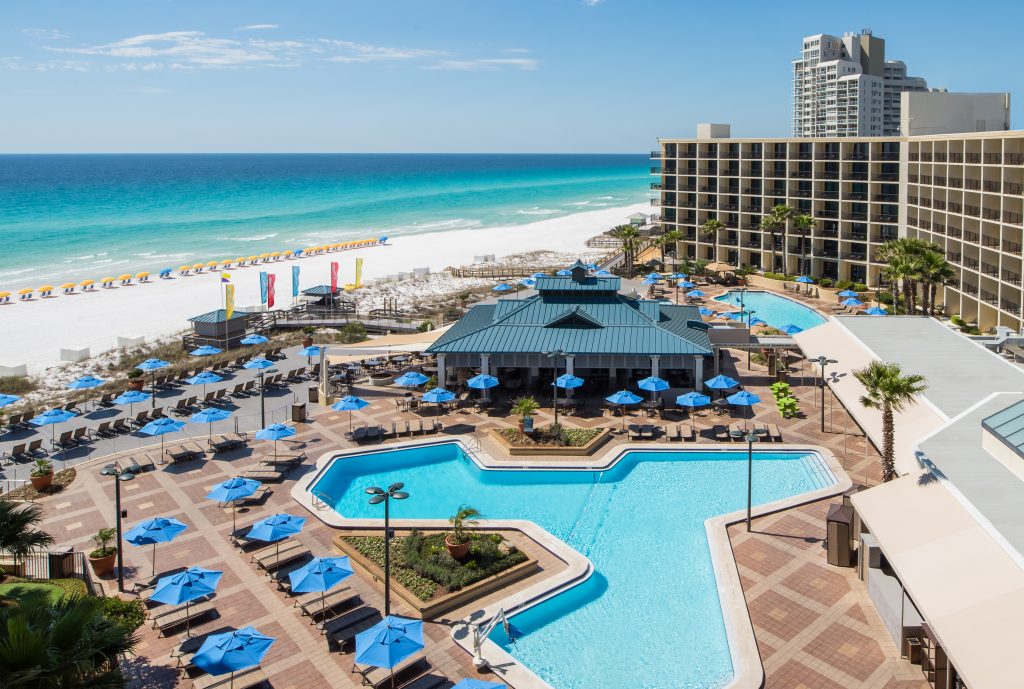
This might mean engaging through activities like spa sessions, workouts, or some fun in the sun. For example, as part of its new “Build Your Meeting or Event” program, the Hilton Sandestin offers an interactive, guided sand building experience along the beach. Local photographers are available to capture aerial footage of the finished sand structure.
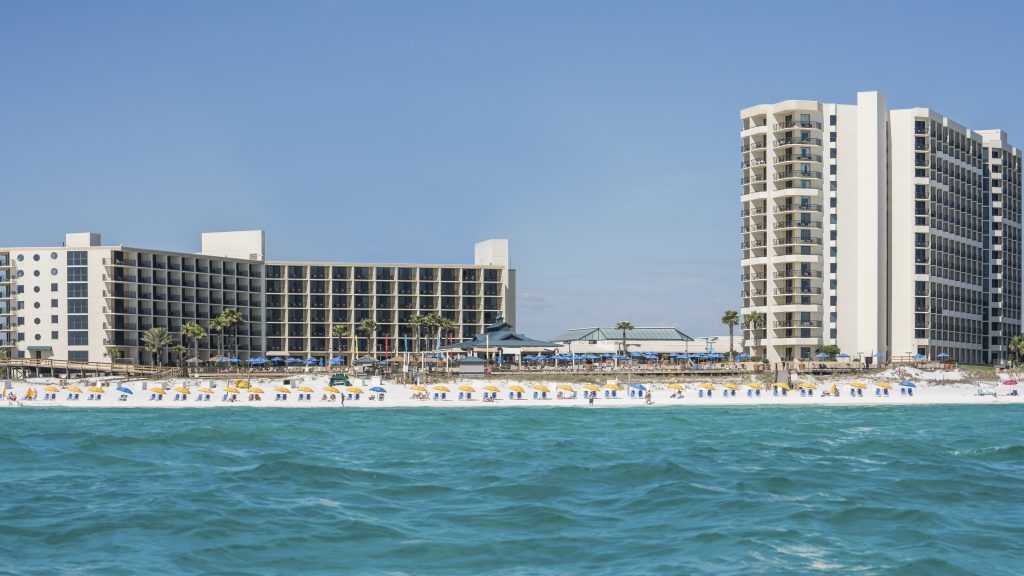
The Ranch Malibu’s Glasscock says that “activities that promote camaraderie and team building and offer lasting and tangible mental and physical health benefits are popular amongst guests,” such as hiking, group fitness classes, outdoor dining, yoga, and culinary classes.
Follow health and safety guidelines.
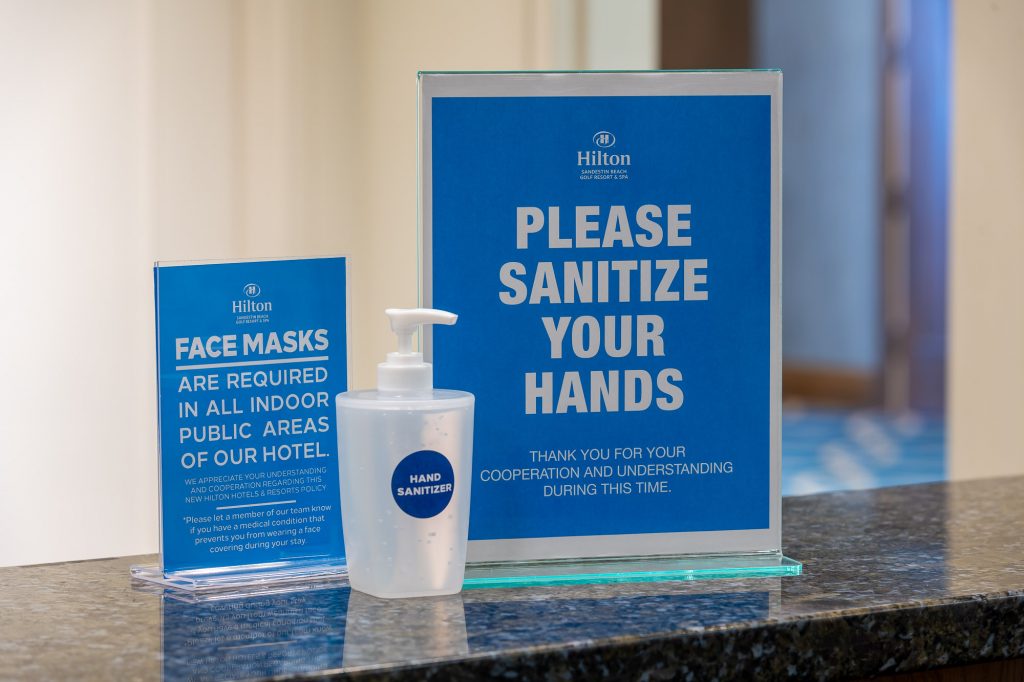
Depending on company protocol, you may need to require all attendees to be vaccinated or to submit a negative COVID-19 test beforehand. Some venues, such as the Hilton Sandestin, offer the option to add onsite rapid testing to the group package.
“We have had clients bring mobile testing on site, and they have requested that our staff be tested as well by their testers. We happily complied, which helped provide a sense of comfort that those in closer proximity to top leadership were tested and safe,” explains Jeanine Conforti, sales and marketing director for Canyon Ranch in Woodside, Calif., which is located 30 minutes from San Francisco and Silicon Valley.
In addition, hosts will most likely want to continue to maintain social distancing including spacing tables six feet apart and enforcing mask wearing, so that attendees feel more comfortable and at ease with gathering IRL.
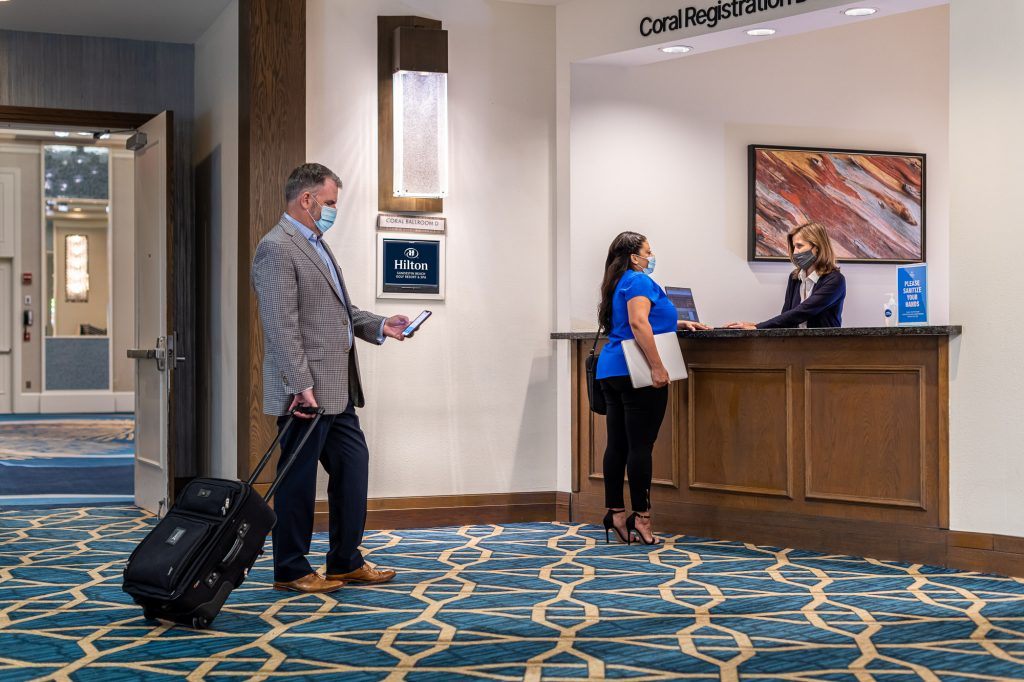
Conforti said that Canyon Ranch is advising against close indoor activities, “and encouraging setups for meetings to be more soft seating instead of traditional boardroom- or classroom-style,” she says. “It’s more comfortable and allows for those who want to be socially distanced to not feel compromised and not have to feel like the squeaky wheel.” She also added that outdoor hikes offer the ability to talk one-on-one, while still keeping some distance. “We offer the most amazing hikes anywhere, so why not take advantage of it?”
Betsy Khashoggi, director of corporate experience at Goodstone Inn & Restaurant, an eco-luxury resort located less than one hour from Washington, D.C., says that the property’s “most recent corporate requests are to have the group experience with meals and most of their meetings to be held outside, preferably by the pool, seated in a way where they are social distancing and where they can get up and move about to enjoy the fresh air and beautiful space.”
Plus, consider asking for information pertaining to comfort levels ahead of the event, such as do you prefer for everyone to wear a mask? How comfortable are you with sharing accommodations with a fellow employee? After all, team members won’t be comfortable sharing their big ideas with the group if they don’t feel comfortable.
Look for venue buyouts.
Many resorts and hotel properties, particularly smaller-scale ones, offer venue buyout options that offer guests a level of comfort and safety. For example, The Ranch Malibu offers two programs that allow for a more insular experience. The Ranch Private is a customized experience for two groups of up to four (or one group of eight). The program is tailored to the needs of the group and held separately from the property’s other guests. Designed for larger groups, The Ranch buyout option transforms the 19-cottage, 200-acre retreat into your own private space for a week or longer.
Host a summer camp.
“Camping has become one of the most popular leisure vacations over the past year given the natural ability to social distance and take advantage of the great wide open spaces in nature,” explains Tessa McCrackin, chief marketing officer of Northgate Resorts, which is set to launch a new glamping and camping resort in July called Camp Fimfo, located in New Braunfels, Texas (an hour outside of San Antonio and Austin). “The same is true for corporate retreats and offsite venues. People want to be in nature, take solace in the great outdoors, and have some fun doing it.”

Camp Fimfo will feature 200 RV sites and tent sites that are equipped with potable water and electrical hook-ups, plus there will be 25 mid-size cabins that can sleep six to eight people and three large-size cabins that can sleep up to 10 people. A dedicated event space is also part of the development plans.
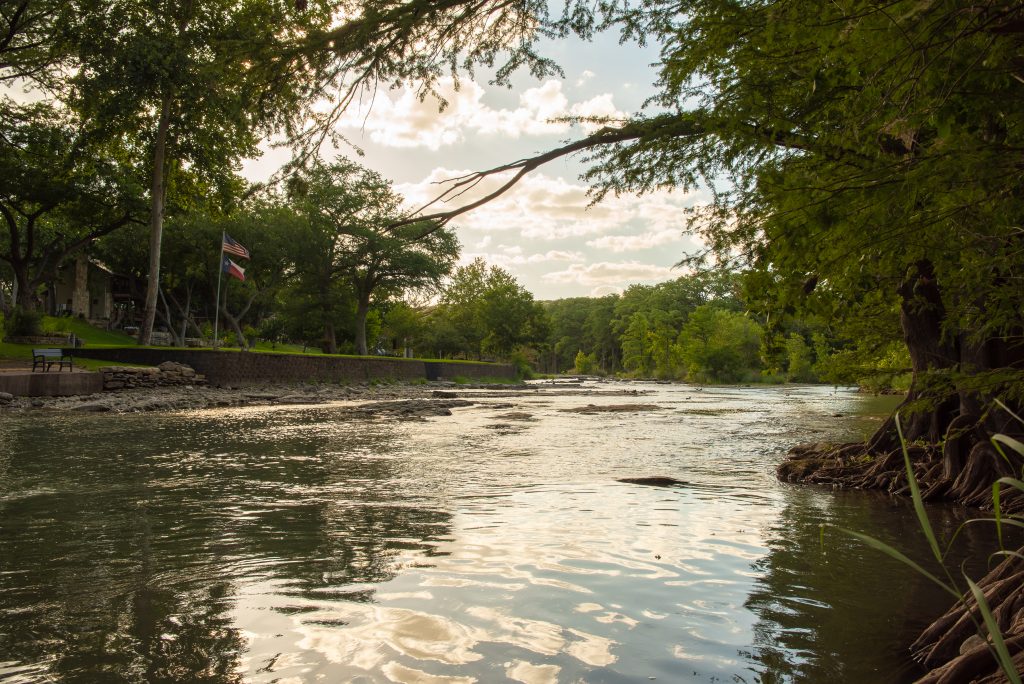
Accommodate at-home attendees.
Of course, not everyone will feel comfortable meeting in person just yet. In this case, some type of virtual component should be included within the offsite experience.
“Some employees do not feel comfortable traveling, and each group so far has had that instance,” Conforti says. “Some haven’t been able to travel as well due to visas, passports, etc…. We’ve had meetings go as long as 12 hours via Zoom for four days with half of the guests from overseas. A big screen helps,” she notes.
While a Zoom call might not be the same as a cabana by the beach, Rosa says that an amenity box of items can be sent to at-home attendees and that the Hilton Sandestin team can provide virtual backgrounds of the resort property, so attendees can feel like they’re participating onsite.
“Since we launched [Virtual, our virtual meetings product], we learned that because a virtual audience isn’t immersed in the on-site experience, the individual designing the offsite will have to work a little harder to make the content appealing,” Pooser explains. “No one wants to stare at a static image of co-workers meeting miles away and, more importantly, you don’t want to give the remote attendees ‘meeting FOMO’ where they wish they were there instead of at home.”
She recommends “switching between two camera angles, cutting between speakers, panning for brief shots of the in-person crowd, and mixing in purely virtual moments like videos, chat, and polling or Q&A” to make the content more engaging to at-home attendees.
While in-person events begin to reboot across the country, many workers continue to work from home. Company offsites and retreats can offer a way for them to reconnect with colleagues in a safe, inspiring environment that doesn’t contain cubicles.

